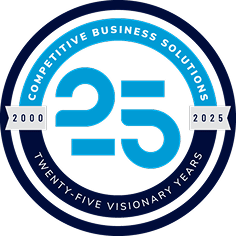
The most dangerous phrase in today’s manufacturing—“We Leaned it out.”
As many of us already know, Lean is a term that depicts broad concepts within world class operations developed by Toyota following WWII. Over the past two decades, I’ve often heard leaders from different industries describe their successes by stating something along the lines of: We’ve Leaned out our factories. It’s a phrase that seems benign, yet it’s one of the most dangerous phrases a leader can use. Why? What’s wrong with this phrase?
We’ve Leaned it out is often said in light of a positive situation within business or operations. Usually, it means that in the past, a company’s operations were poor performing, but presently, they’re very productive. The operations may have been full of waste and causing financial stress, but now, they’re a model of excellence. So, what’s the problem? Leaner operations are what we all strive toward, isn’t it?
Yes, of course. But there is a world of difference between communicating “Leaner Operations” versus “We’ve Leaned it Out”.
First, let’s start with the concept of the past tense. (Yes, I’m taking it back to our old-school grammar days.) Past tense implies finality; the task is completed—time to move on. Yet, all the research indicates that improving a business or operations is a continuous process. What is great today might very well be mediocre tomorrow. One lesson I’ve learned over 20 years of consulting and another 15 years of running operations is that we are either progressing or regressing, but we are never standing still. I’ve never returned to a company after 5–10 years and seen performance at the same level. Companies either continue to improve or slide backward.
When leaders say, We’ve Leaned it out, it sends a strong message to the management team that they are done with continuous improvement. They have squeezed everything they can out of the existing operations. In contrast, however, the very nature of free market capitalism requires that the operations continue to improve. The irony of the message is often lost by those who don’t actually drive the changes within the business. For those who do, Lean has a common understanding of a continuous pursuit of perfection to eliminate waste. No past tense, no finality.
Second, We’ve Leaned it out also implies the effort was a task, or something to be checked off a project plan, rather than a philosophy—a way of thinking and operating. I visited Japan early this year, and one of the starkest contrasts I noted with the US was that everything in the Japanese airports and train stations functioned as designed. There was not a single escalator, moving walkway, kiosk or any feature that was not functioning at 100%. As a consultant who spends 200 or more days each year on the road, I can’t remember going through a US airport where everything worked. What’s the reason for these kinds of vivid contrasts? It’s a difference in the way of thinking. Could we put a project plan in place at Newark airport and get everything operating within the next 6 months? Sure, but would it be working 5 years from now?
Finally, We Leaned it out oversimplifies what a company has achieved to date. It’s like boiling down all of NASA’s efforts and achievements by saying, “We went to the moon.” The phrase doesn’t begin to describe the tremendous efforts, inventions, creativity, teamwork and commitment necessary to achieve the moon landing. Leaders need to continue to motivate their teams and recognize the achievements of the ongoing journey toward building great operations.
In the end, words matter. As leaders, we should be cognizant of the intended and unintended messages we send. For those fighting the improvement battles, Lean is a continuous pursuit, a mindset and culture aimed at achieving world class operations, longevity and increasing benefits to a business and its customers.
Latest Insights
Sign up to receive our latest insights!
"*" indicates required fields




